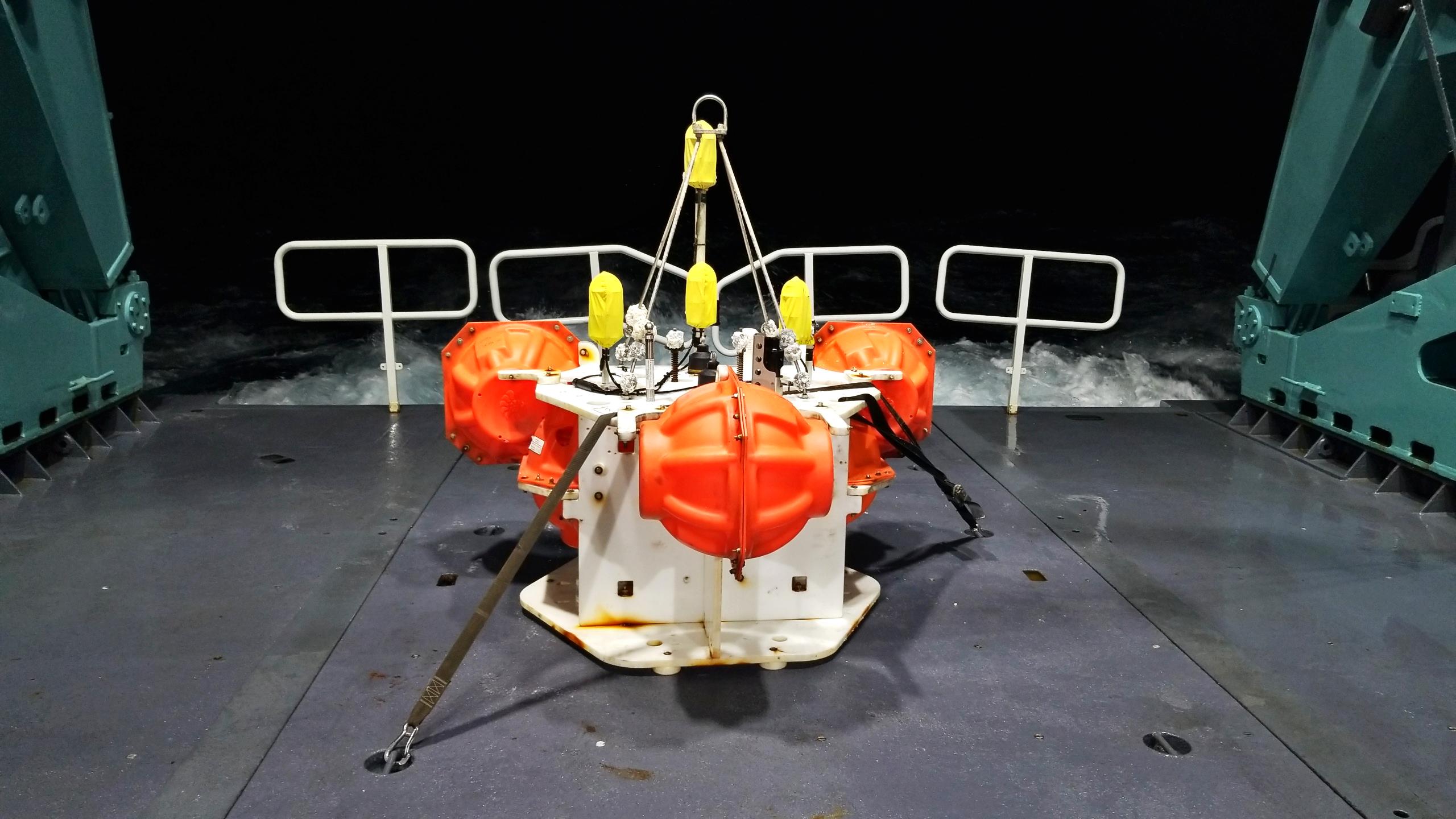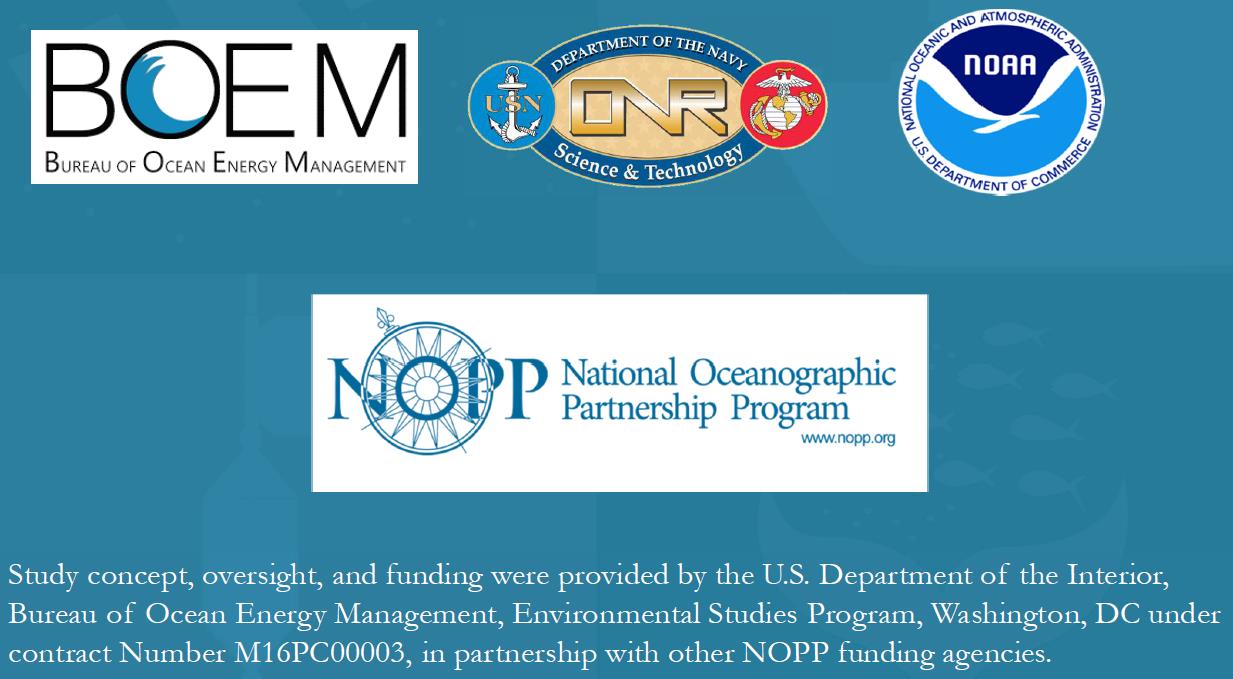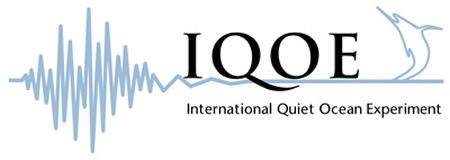Over the past year, November 2018 through 2019, seven- ADEON bottom-lander instruments deployed along the U.S. Mid- and South Atlantic Outer Continental Shelf have been busy collecting data. Unfortunately, during the AR040 November 2019 recovery cruise, our team found upon initiation of the release signal, that the 900-meter-deep BLE lander could not rise to the surface. Perhaps it became burried by sediment related to the passing of Hurricane Dorian, or some other mechanical block prevented the release. Yet happily, on the day before Thanksgiving, the lander rose on its own and was still calling home to JASCO Applied (ADEON lander creator and research collaborator) Sciences via the onboard satellite beacon.
After an alert from JASCO about the newly surfaced lander, ADEON’s team worked throughout the long holiday weekend with Kerry Strom, Woods Hole Oceanographic Institution (https://www.whoi.edu/) and Melissa Brennan of the M/V Alucia, (OceanX fleet (http://www.oceanx.org/) to orchestrate a rescue effort.
On December 1, in concert with JASCO who provided coordinate feeds for the drifting lander, Captain Nick Inglis and the Alucia crew (http://www.oceanx.org/ship/) worked into the night to find the lander. Near midnight one of the crew [who deserves the name Owl-Eyes] spotted the lander bobbing [without a working beacon light] in the dark waters of the Atlantic.
The Alucia crew, OceanX, WHOI, JASCO, and all those involved that willingly worked together on this recovery, demonstrated a true community partnership and a dedication to rise above the call of duty in the advancement of ocean science. Not only did this group’s actions facilitate the recovery of a valuable ocean observation asset, it also returned over a year of data in a three-year dataset, which by contract will be made available to the public in support of present and future science.



